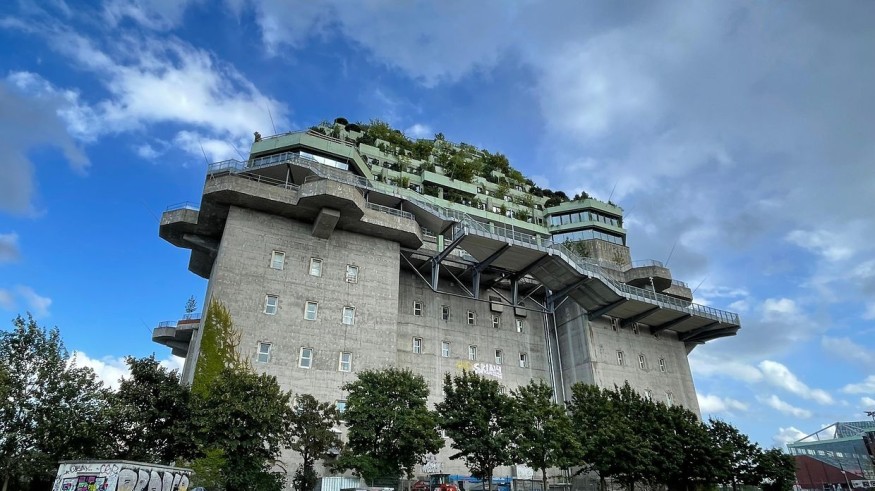Former Nazi Bunker in Hamburg, St. Pauli Reopens as a Rooftop Garden for Visitors
Originally an air raid shelter built by the Nazis during World War II, Hamburg's St. Pauli Bunker reopened to the public with gardens on its rooftop, as reported by Parametric Architecture.
The gigantic bunker, once called Flakturm IV upon its completion in 1942, was constructed to provide protection to as many as 18,000 people during the aerial attacks. So far, it has stood for over 80 years as a reminder of wartime history in Germany; now, its redevelopment serves to connect the community to that history while pointing toward a sustainable future.
St. Pauli Bunker's Green Restoration

This 75-meter-wide, 75-by 35-meter-high structure is one of the most iconic bunkers in wartime Hamburg.
According to Arch Daily, the new design aims to bring back this 'iconic' title by complementing 4700 plants, and sustainable irrigation systems. Some 80 sensors have been installed within the greenery to monitor the microclimate and learn more about the impact of green roofs and facades. Besides biodiversity, this new design also aims to alleviate flood risks.
Paul Hahnert, Managing Director of EHP Property Management, emphasized the importance of respecting the bunker's history while embracing modernity. "It was very important for us that the hotel takes an open-minded approach to the creative neighborhood and also demonstrates responsibility towards the history of the bunker."
When those rooftop gardens are coupled with repurposed space in the bunker, it becomes a singular experience for future visitors-a great mix of history and sustainability. The development of the St. Pauli Bunker looks at the approaches of turning a symbol of conflict into a community-centered space with eyes on a greener future.
From Digital Models to 3D-Printed Homes: Jaspreet Kaur Lall Explains How the Innovation Changes the Construction Industry

Future Belongs to Green Construction: Sampath Kumar Paspunoori Explains One of the Key Trends in the Construction Industry

Kamala Harris' Campaign Ad Uses Iconic Visuals from Carrie Mae Weems to Connect with Voters

Historic Ancient Roman Ruins in Baalbek Remain Strong After Israeli Air Strikes; Locals Seek Cultural Protection

4 Ways to Honor Departed Loved Ones in Your Home Design














